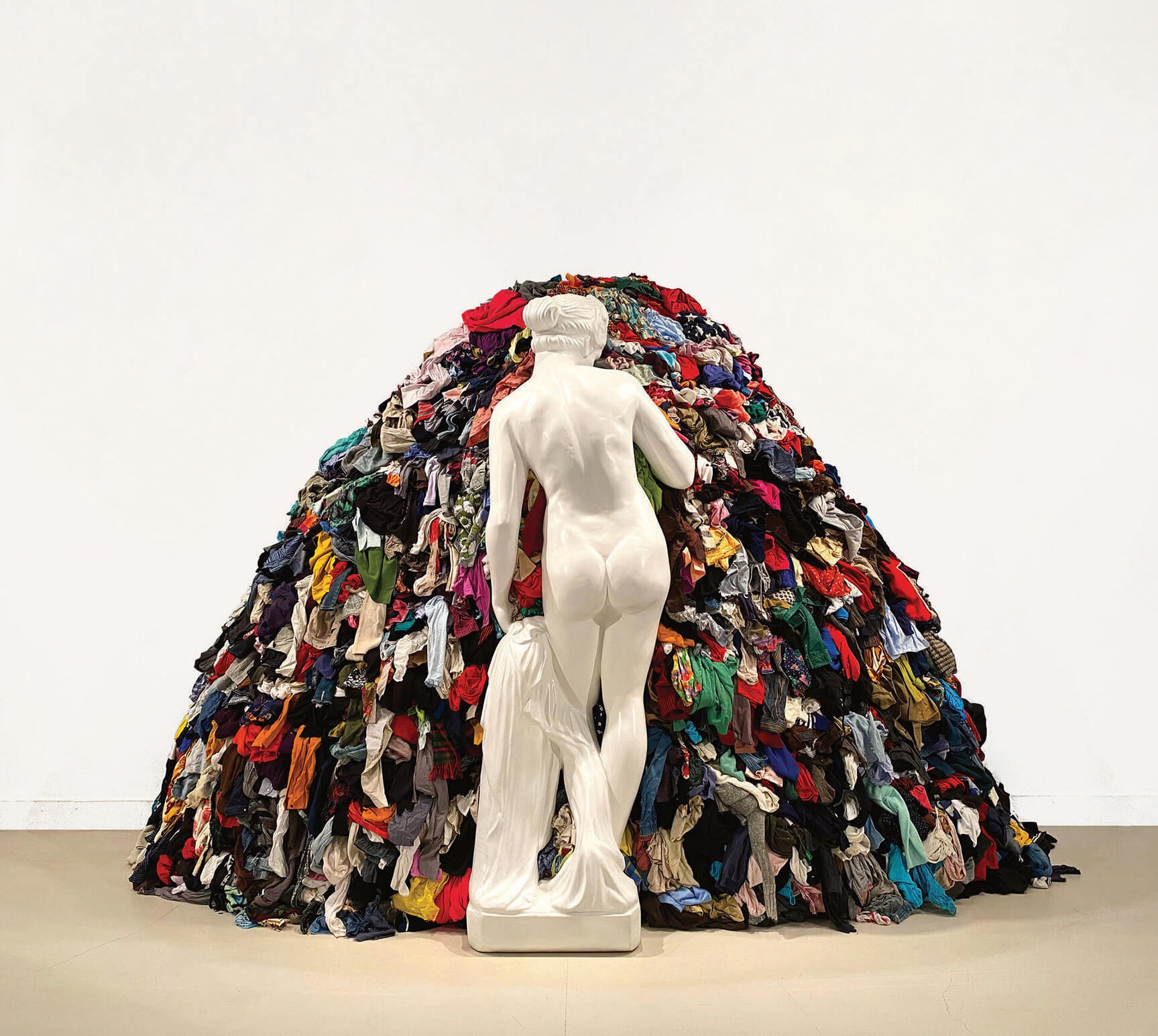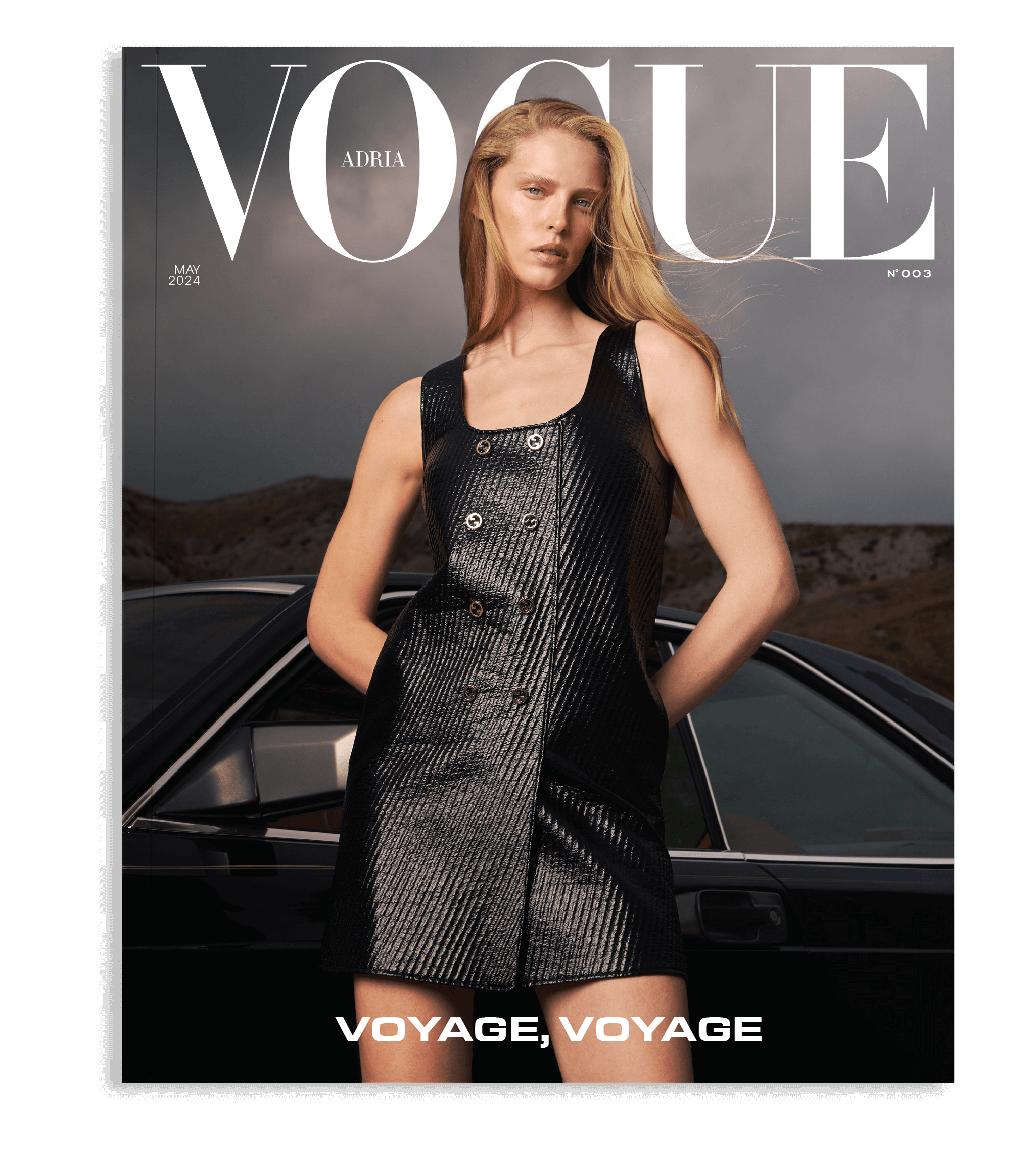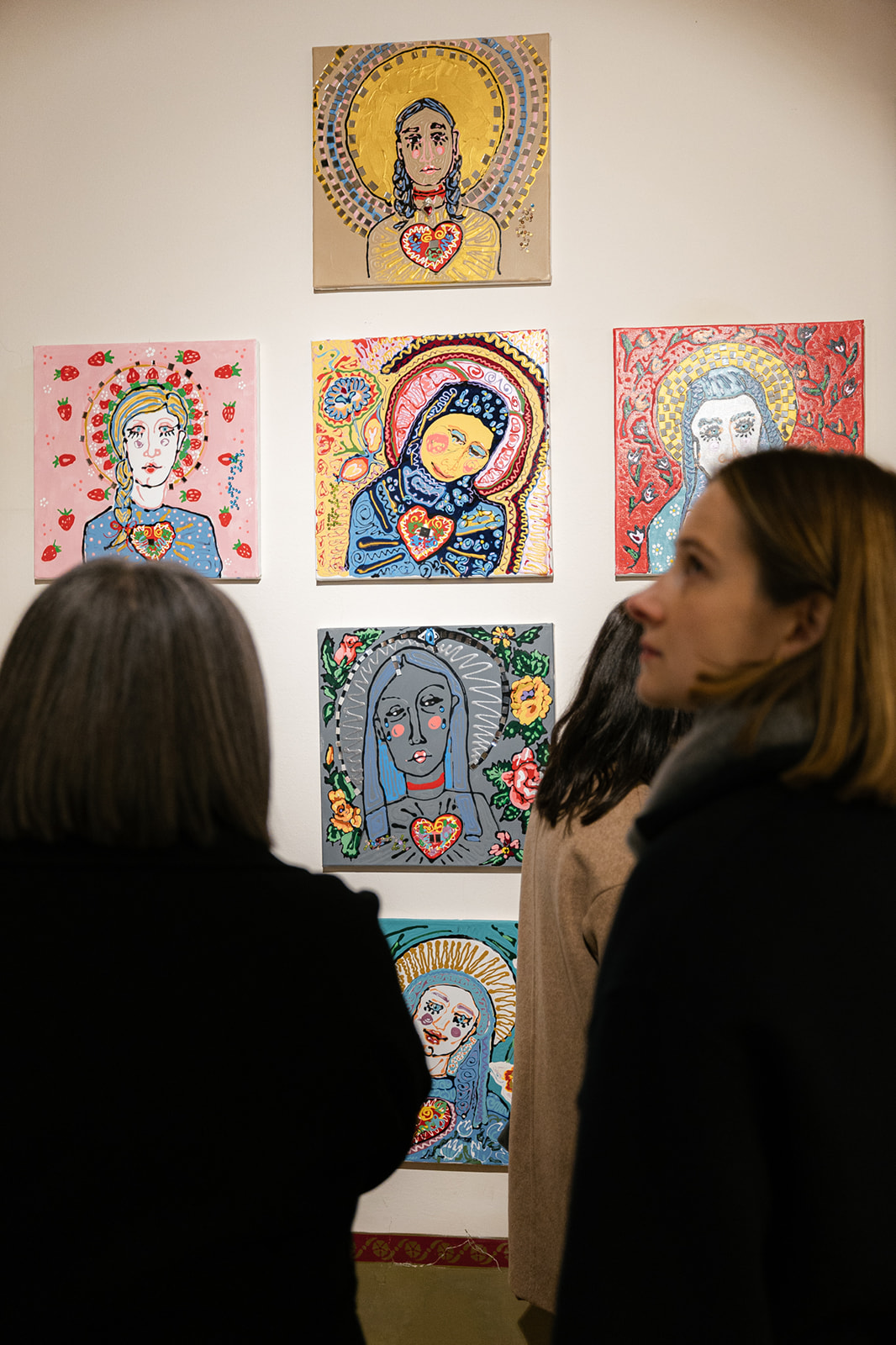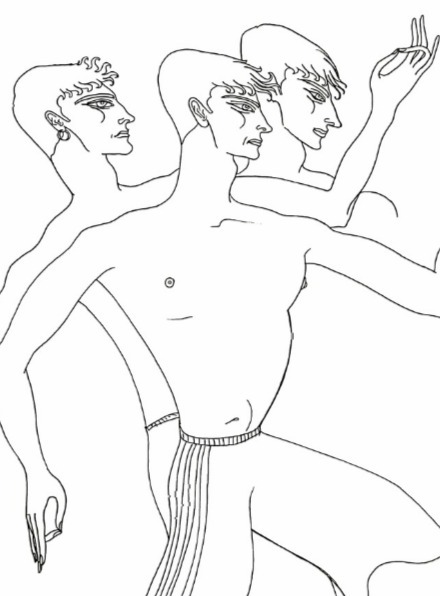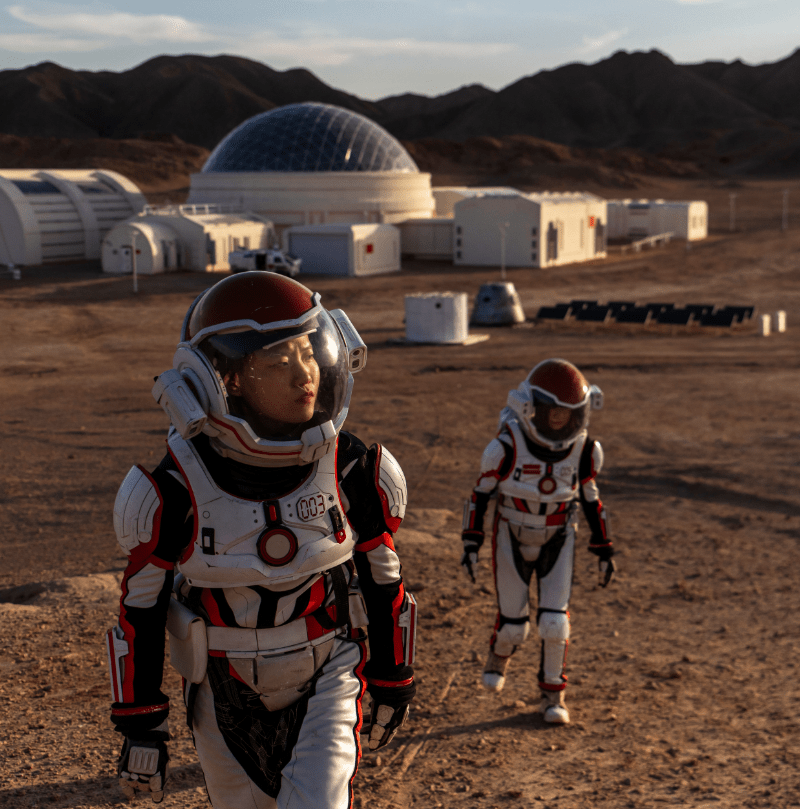Michelangelo Pistoletto is one of the most significant artists of the twentieth and the most influential artists of the twenty-first century. What is most often first associated with Pistoletto is the so-called Arte Povera movement – poor art. Artists who belonged to the Arte povera movement created works from “poor materials”, made art from life in a certain way and fought against the commercialization of art. Arte povera is a kind of arrhythmia on the Italian art scene, a spontaneous movement that did not formally refer to anything that happened on the scene before it.
Picture one: Imagine an elderly and completely vital gentleman driving a car through Italy and talking to a foreign journalist on the phone. The reason for this type of communication? Pistoletto (at least when driving) uses only the telephone line, and the conversation with one of the greatest conceptual artists of the twentieth century is reduced to voice. That’s how I had a conversation with Pistoletto, who is intense, clear, and has an open view of the world. Pistoletto is always aware of something that we often lose sight of – and that is the fact that we change the world by being a part of it.
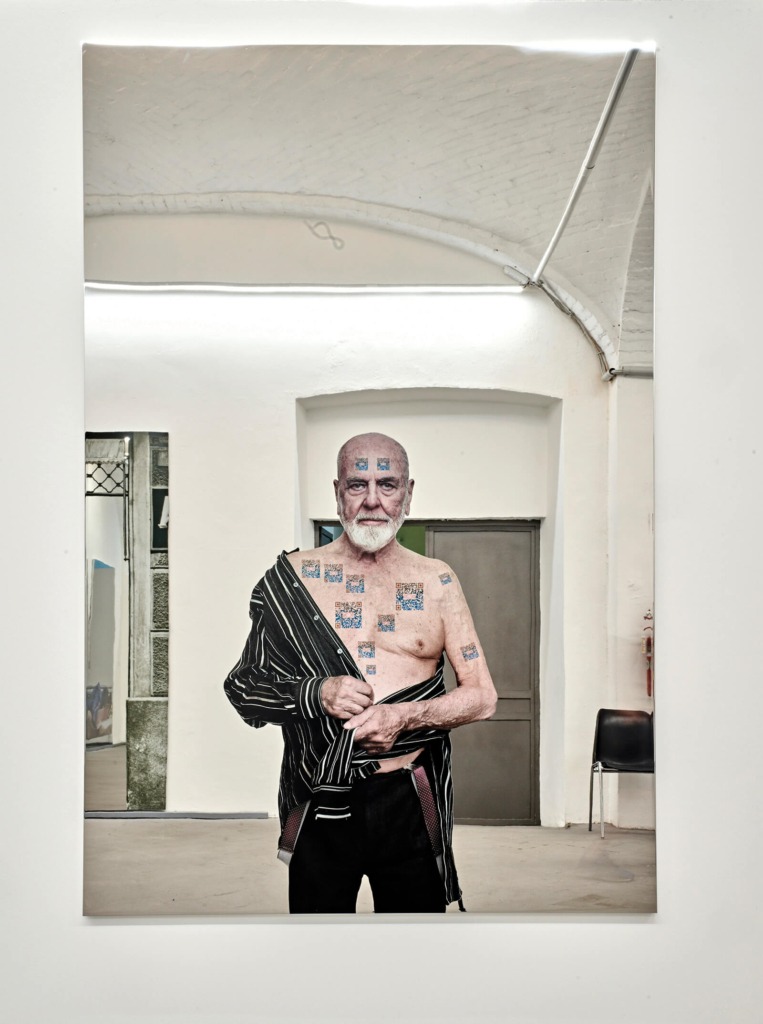
Picture two: To make the picture of Pistoletto more complete, let’s not forget the context in which he grew up and was formed as an artist. Born in 1933 in Bijela, his childhood was marked by the Second World War. He grew up between Turin and Sousse, his father was a painter, he had great support from his family to become an artist. At the time when he entered the art scene, the political situation in Italy was (one should not lose sight of that) very complex. In the film “XX century”, Bertolucci talks about the roots that marked that time. The Communist Party is very strong, but so are its antipodes. The director Pier Paolo Pasolini, a prominent leftist, was killed under circumstances that have not been clarified to this day, the radical leftist organization Red Brigade kidnapped the Prime Minister Aldo Mora… It was a time of intense political and cultural turmoil in which Pistoletto grew up.
Picture three: The reason for the conversation with Pistoletto is the exhibition “Preventive Peace” which opens in the Museum of Contemporary Art in Belgrade (curator is the director of the Museum, Marijana Kolarić). Pistoletto is known to the Yugoslav audience, but if we consider the period after the 2000s, he had a solo exhibition in Sarajevo, in the Contemporary Art Gallery of BiH in 2001, and then in 2022 in Ljubljana, in the Cukrarna gallery. The exhibition “Preventive Peace” is his first independent exhibition in Serbia.
The message with which Michelangelo Pistoletto comes to Belgrade, a message to the region and the world, is a message of preventive peace. He is a man of great narratives and in conversation he will say that the world is in the final war, and that humanity needs preventive peace.
How do you view the period of the Arte povera movement today and how do you connect it with the “Preventive Peace” exhibition?
Arte povera was based on the principle of peaceful living, and the exhibition “Preventive Peace” is also related to this idea. In one way, it is a response to the idea of a preventive war (the idea of a preventive war was initiated by the USA during the war in Iraq during the reign of Saddam Hussein, author’s note), because the world we live in is now in the final war.
What does the name “Preventive peace” mean exactly in a wider context?
My exhibition is about putting opposites together, but not with the intention of creating an explosion and war, but quite the opposite, to establish balance and harmony. This exhibition is about establishing harmony.
You are an honorary citizen of Sarajevo, your ties to that city are intense, you donated your works to the collection of the Museum of Contemporary Art Ars Aevi, as well as to the History Museum of Bosnia and Herzegovina, you presented your project Third Paradise in Sarajevo… Are you planning to visit Sarajevo?
I always want to go to Sarajevo. In Sarajevo, I presented the concept of the Third Paradise, right after the war. I tried to come up with a method that would produce a change. The method of the Third Paradise is to put opposites together, not to create war, but to create peace. We must start with this concept in schools, children must understand that we have the option to choose between war and peace. The idea of peace must be worked on and it is necessary to start from school.
Pistoletto’s symbol of the Third Paradise, which will be performed in the Friendship Park in front of the Museum, as a sign of peace and friendship, is a symbol of infinity in the middle of which is inserted a part, a new central circle of his formula of creation – an extended mathematical symbol of infinity.
This new central part is also visually larger, and he considers it the key goal of humanity – to live in humanity and goodness. The circles on the left and right are smaller, the circle on the left he calls nature – human nature created when man bit the apple, i.e. when the fall of man’s earlier nature took place, so it is a symbol of all human wars and destruction… The circle on the right is a symbol of (positive) free will, which is given to man to choose what and how he will do, and at the same time it is a symbol of education, knowledge and culture, which must be oriented towards humanity and the future of humanity, the use of knowledge for the good of humanity. Knowledge is given to people, Pistoletto reminds us, but only for good and progress in good. The central part is achieving true progress.
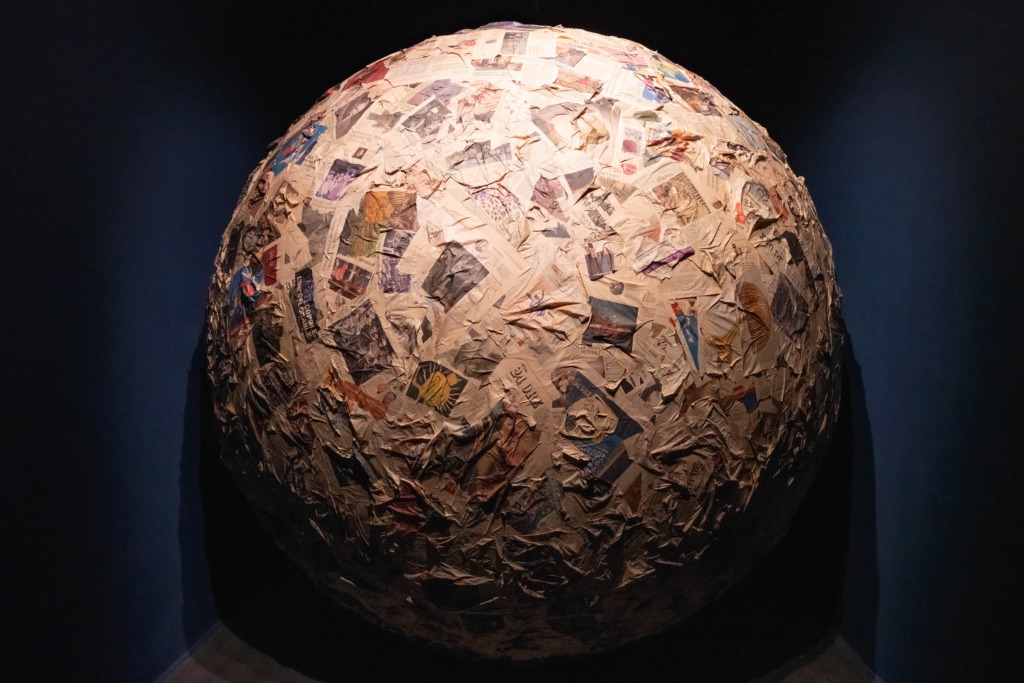
You published the book “Creation Formula”. What is that formula for you?
It is a formula of three circles that represent the evolution of the symbol of infinity, we have two circles that are opposites and a third between them, within which I can create harmony, not aggression. But we must be aware that there is a possibility to look at the Other in a new way, not as an enemy but as a friend, that it is possible to be creative in a new way.
Since his appearance on the art scene, Pistoletto has been pointing to the necessity of reconciling contrasts, opposites, establishing harmony and the consequent beauty of living. Curator Fortunato Damiko points out that according to Michelangelo Pistoletto, true change is only possible through the effective practice of democracy that actively involves citizens and their organizations in the process of responsible social transformation. Francesco Saverio Teruzzi, the coordinator of all ambassadors of the Third Paradise project, agrees with this, and when I asked him what was the most important of Pistoletto’s work, he said that he saw Pistoletto’s greatest legacy in the process of social transformation.
What does coming to the territory of the former Yugoslavia and now coming to the exhibition in Belgrade mean to you?
Yugoslavia was an anti-fascist country, part of the Non-Aligned Movement, which represented an alternative to the division of the world at that time, and it is still important to make a new start with awareness of that movement, of that place, since there is still a need for international connections between different continents. For me, this exhibition is an opportunity to extend that desire in a certain way.
The exhibition “Preventive Peace” is a retrospective. How do you see your life and artistic path in the context of European and world art?
Art is very individual not only in Europe but also in the world… My work is no longer individual. In the 1960s, I painted and began to think about the participation of the viewer, the one who observes, the participation of people in my work, because everyone is a part of my artwork. Within my identity is the identity of humanity and I am not alone. In art, we all need to be together in order to create a creation that is not only individual. We want to create a work with which we can participate in the democratic concept of society. We can create a collective creation, it is quite different from the work that the artist puts on the market. The market is good, but not good enough. It is necessary to follow the concept of community in art.
What advice would you give to a young artist?
To exercise his own capacity for creation, but to be aware that he has to meet other artists and present himself to society.
Towards the end of our conversation, Pistoletto also tells me that he may not be able to change the world, but he is happy that he is working on it every day. This is not only an incentive, but a concrete possibility that we should all look at and take advantage of.
Special thanks to Amela Zec Filipović, the ambassador of the “Third Paradise” and an official in the Office for Culture of the Embassy of Italy in Bosnia and Herzegovina for more than two decades. Ambassador of the Third Paradise is also Enver Hadžiomerspahić, founder and author of the creative solution of the Ars Aevi project.
The Museum of Contemporary Art in Belgrade hosts Pistoletto’s first solo exhibition in Serbia, “Preventive Peace”. The curator of the exhibition is Marijana Kolarić, director of the museum. The exhibition is accompanied by an illustrated catalog with essays by Danilo Ečer, Karolina Hristov-Bakargijev and Marijana Kolarić. The exhibition was organized in cooperation with Cittadellarte – Fondazione Pistoletto, the Zerinthia Association and the Italian Institute in Belgrade, under the auspices of the Ministry of Culture of the Republic of Serbia and the Embassy of Italy in Belgrade, as part of the celebration of 145 years of diplomatic relations between Italy and Serbia and the centenary of the Italian Embassy in Belgrade.
